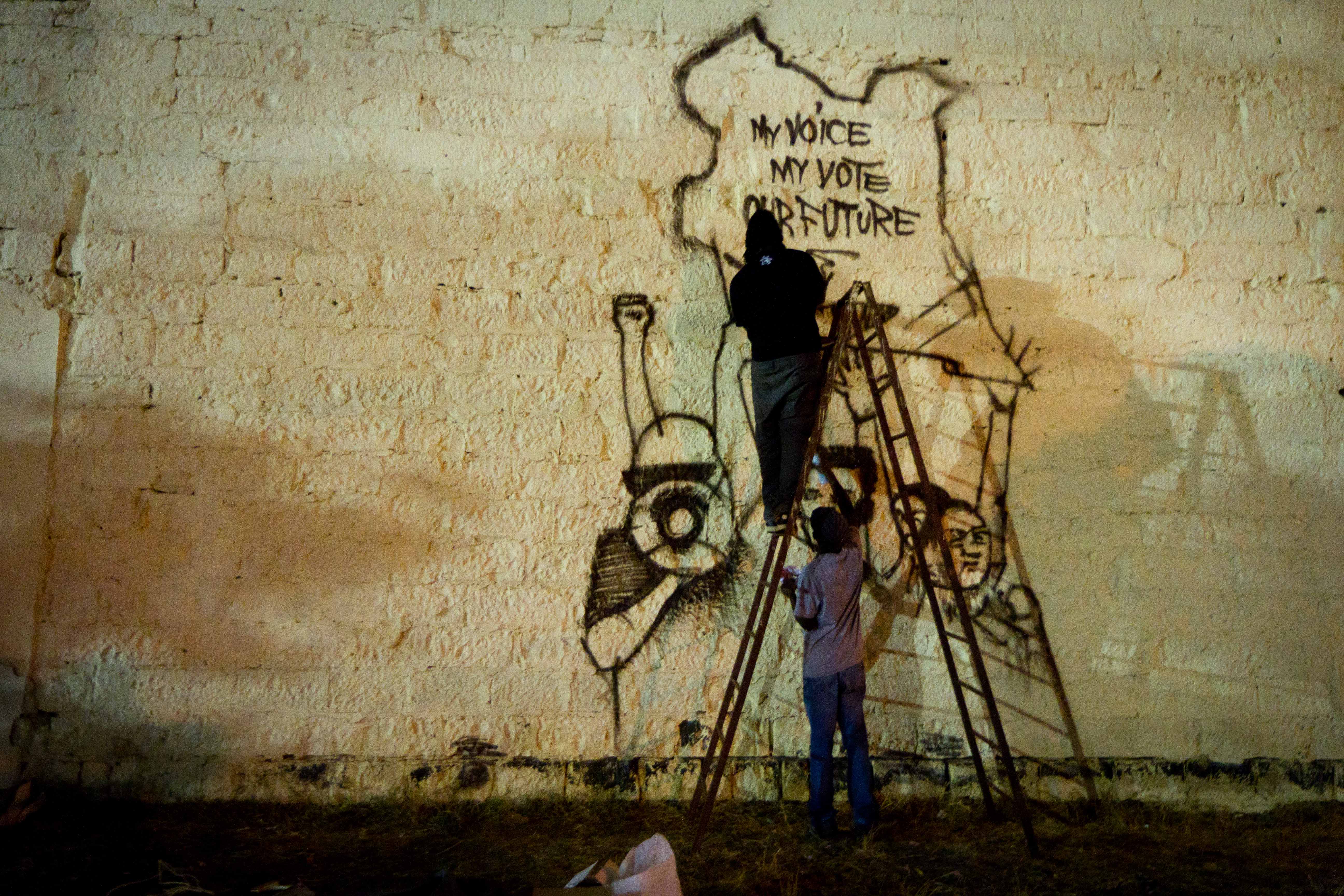Photos by Andre EpsteinBoniface Mwangi is a Kenyan photojournalist who likes messing with politicians. He made a name for himself photographing Kenya's post-election violence in 2008, later winning the CNN Photojournalist of the Year award. He’s been arrested and had his cameras broken on several occasions, and he was even banned from Facebook, purportedly for being too politically outspoken.Now Mwangi’s moved on to graffiti to challenge the current regime, tribal politics, and a host of other grievances including land grabbing, famine, and IDP resettlement. He’s hired a crew to paint 50 political murals across the country’s poorest areas in the run-up to this year's elections. It's illegal to do this, but Mwangi doesn't really care.
Advertisement
“The guys in power have been raping this country for the last 49 years. We speak from the flesh. We want to tell the story of Kenya. You can’t do 49 years with a photo, but you can with graffiti,” he said.

Mwangi was joined by a half-dozen artists on a quiet Tuesday night in downtown Nairobi as they worked on painting their inaugural mural. A piece this size would usually take days, even with a large crew. They did it in seven hours. A blank wall in a filthy, abandoned lot near the city market was illuminated by floodlights as various crew members traced a 30-meter tall mural that tells the story of corruption in Kenya.“We’re using images of a vulture MP stomping on a face, of protests and Parliament, to tell Kenyans that when you sell your vote, you’re mortgaging our future,” he said.Scaffolding that was delivered to the site wound up being just a giant pile of timber, and one rather expensive light got shattered in the confusion, but otherwise things went off pretty smoothly. When machine gun-toting police officers showed up to the scene, it turned out Mwangi had hired them to keep an eye on things. No idea how he pulled that one off.“I have a lot of friends,” was his only explanation.Participating in the effort was Markus Quinting, aka Tona, a German graffiti artist who first started painting in Kenya after witnessing the aftermath of the post-election violence, which left more than 1,000 dead and thousands more displaced. “I remember seeing just wave upon wave of people, crushed into trucks driving to the camps, with nowhere to sleep or sit,” he said. “I wound up at a hip-hop jam with some drug dealers after that, and I showed them my sketchbook, and they gave me spray cans. That’s how it started.”
Advertisement
Quinting’s already been arrested once after painting illegal political art in the Kibera slums. The police back in Germany know him and his crew well enough to have their phones tapped.Kenya is hurting for professional graffiti artists, and painting illegal after-hours murals with dozens of people involved is complicated at best. But Mwangi’s confident the project will succeed anyway. “What’s the worst they can do?” he says. “Arrest us? We’re not worrying about the project. Worrying about it will stop it from happening.”